Growing up in Fort Collins, Colorado, artist Sheila Dunn spent most of her childhood playing, dancing, and creating in the foothills of the Rocky Mountains. Now a resident of Bend, Oregon and best known for her vibrant, geometric figure paintings, Dunn’s passion for the outdoors and wild spaces continue and is most reflective in her latest “Resistance” and “Conservation” art series. Inspired by a deep frustration with the sweeping changes in environmental and human rights policies after the 2016 political election, Dunn transformed her heartache into hope by creating visually stunning pieces designed to raise awareness and money for causes close to her heart.
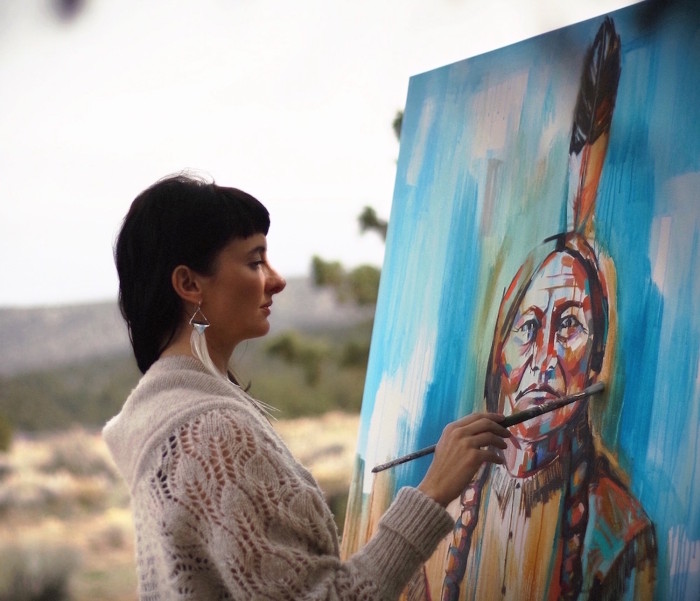
Dunn painting Sitting Bull. Sitting Bull led his people during years of resistance to U.S. government policies, including legendary Battle at Little Bighorn – Resistance Series. Credit: Cait Ford
Emphasizing and utilizing movement, texture, deliberate brushstrokes, and vivid color palettes, Dunn explores “the complexity and beauty of the feminine, some pieces showcase the integration and disintegration of identity within the contexts of relationship, gender, and culture.” The Resistance and Conservation works are an extension of Dunn’s continuing exploration of our cultural landscape – recognizing that, “our vibrant and diverse communities are the strength of our country.”
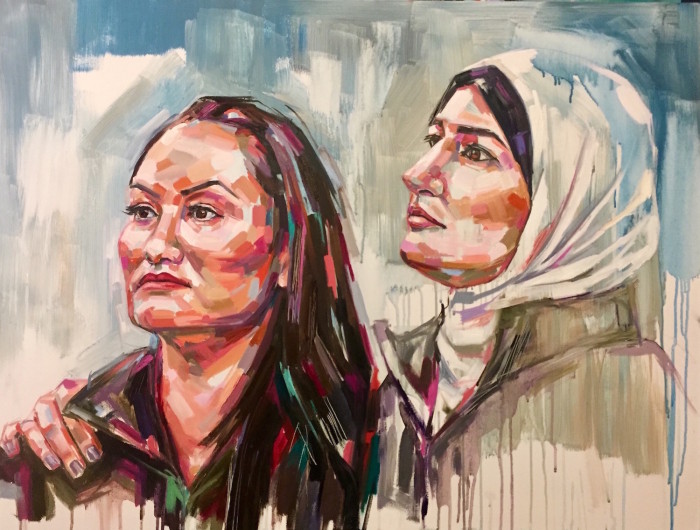
Painting of Civil rights activists Carmen Perez & Linda Sarsour, National Co-Chairs of the Women’s March on Washington – Resistance Series. Credit: Sheila Dunn
The series masterfully highlights public lands, wild spaces, and people (both past and present) that have shaped our history through their steadfast resistance of oppression (in its many forms) from Sitting Bull and Chief Joseph to Eleanor Roosevelt, Amanda Stuermer, and the faces of the Women’s March movement, to name a few. The series also donates a portion of sales to support conservation and human rights organizations.
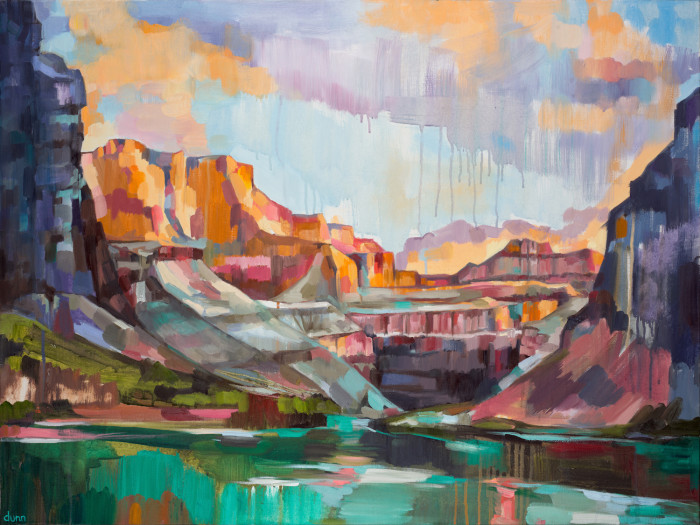
Grand Canyon – Conservation Series. Credit: Sheila Dunn
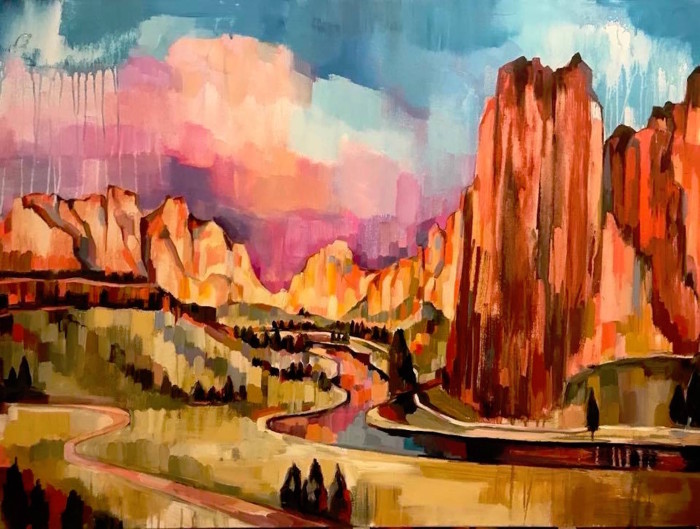
Recent artwork, Smith Rock. Credit: Sheila Dunn
Rogue Habits recently spoke with Sheila Dunn about her rise into the art world, the emotional journey composing the Resistance and Conservation art series, her unique, fractal painting style and daily creative rituals, and what’s on the horizon for the talented artist.
RH: Tell us about your background and journey to becoming an artist.
SD: I grew up in Fort Collins, Colorado, spending most of my childhood playing, dancing, and creating in the foothills of the Rocky Mountains. I was really drawn to singing, dancing, and writing early on and eventually discovered my love of visual arts with the help of some amazing teachers in junior high and high school. I went on to study painting and art history at Colorado State University and have been making art consistently ever since. One of the most impactful times in my journey as an artist was studying abroad in Tuscany (Castiglion Fiorentino) during my junior year of college. There, in the birthplace of the Renaissance, I learned from an incredible man named Paolo. He is a painter, sculptor, historian, linguist, mountaineer and one of the most inspiring individuals I have ever known. He taught me the importance of artistic discipline, curiosity, and playfulness – attributes I carry with me to this day.
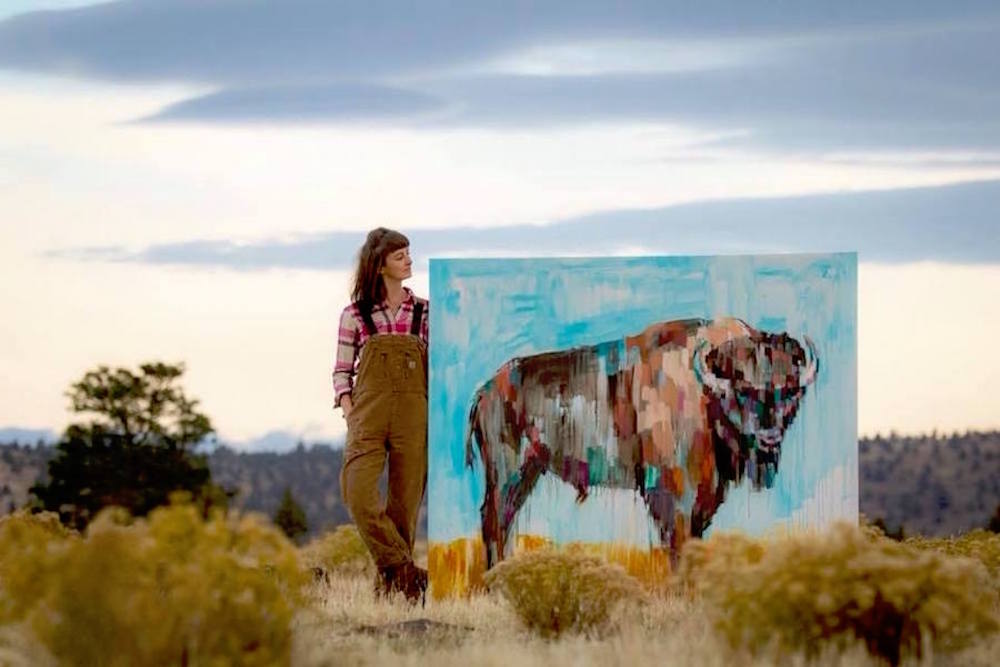
Sheila Dunn with Bison painting. Credit: Ryder Redfield
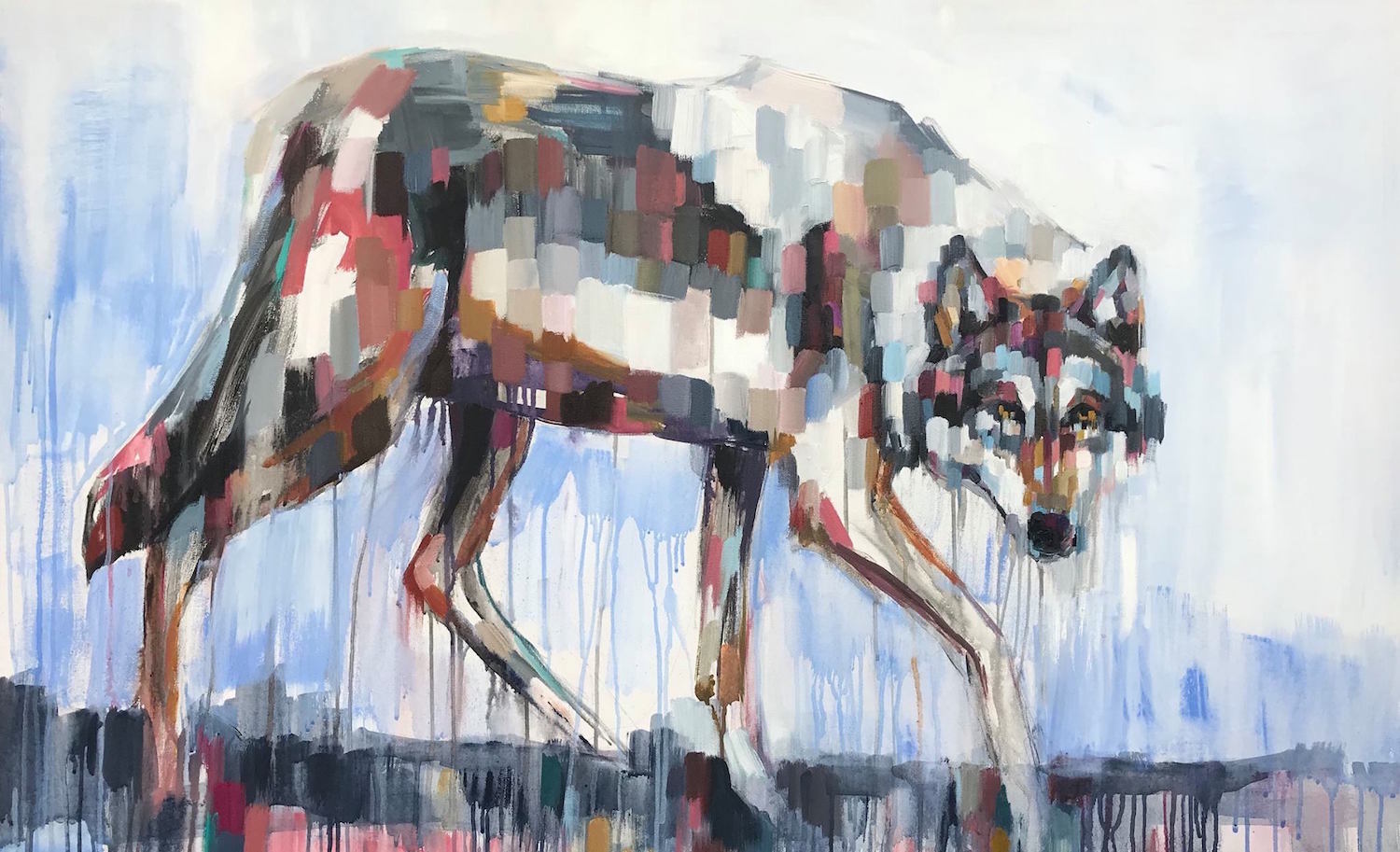
Grey Wolf. Credit: Sheila Dunn
RH: Discuss the inspiration/motivation behind your Resistance and Conservation Series of paintings.
SD: The impetus for my Resistance and Conservation series was the 2016 election. I felt a deep level of despair witnessing this administration strip away environmental regulations and human rights policies so swiftly. In my opinion, these are the very things that make our country great in the first place: the open spaces, public lands, and national parks; the diversity of our populace. I decided to overcome/transform some of that despair into something productive, to use my artistic platform as a vehicle for activism. I started to paint individuals who have shaped our cultural landscape through their steadfast resistance to oppression in its many forms and the public lands/ wilderness that form the spectacular fabric of our nation. Then I donated a portion of each sale to the ACLU and various conservation organizations like the Grand Canyon Trust and The Conservation Alliance. It felt like it was a way to regain some sense of power in a time that felt otherwise powerless to me.

Dunn with Chief Joseph painting. Chief Joseph is known for valiantly resisting the removal of his people from their sacred land in Wallowa Valley (now northeastern Oregon) – Resistance Series. Credit: Mars Ramp
One of my favorite quotes is from E.B. White – “Every morning I wake up torn between a desire to save the world and an inclination to savor it. This makes it hard to plan the day. But if we forget to savor the world, what possible reason do we have for saving it? In a way, the savoring must come first.” I think ultimately, that’s what this series came to mean for me – capturing people and places that are beautiful and inspire reverence within me. And subsequently, a hope that viewers would feel some of that same reverence. That somehow by savoring that which is good and beautiful in our world, we will simultaneously feel moved to save it too.
RH: Your brush strokes are powerful, fractal and deliberate. How do you achieve this distinctive painting style?
SD: First, I spend a good amount of time mixing a variety of tones on two large glass palettes; one with warm tones and one with cool. Then I use a collection of different flat head paint brushes to apply distinctly, individuated strokes. And slowly, by applying differently sized strokes of various colors, I start to build a form out of the fractal parts.
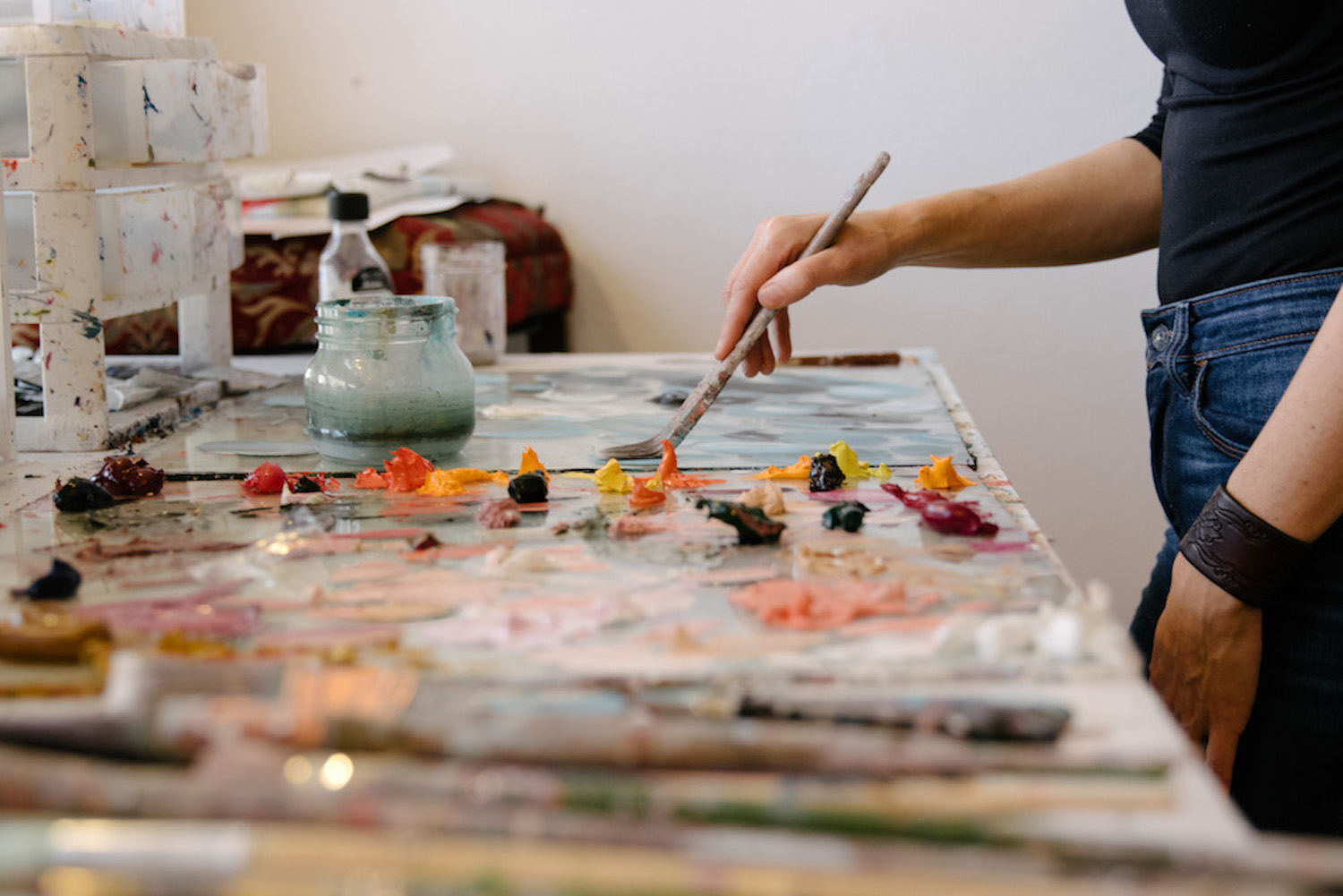
Credit: Julia Duke
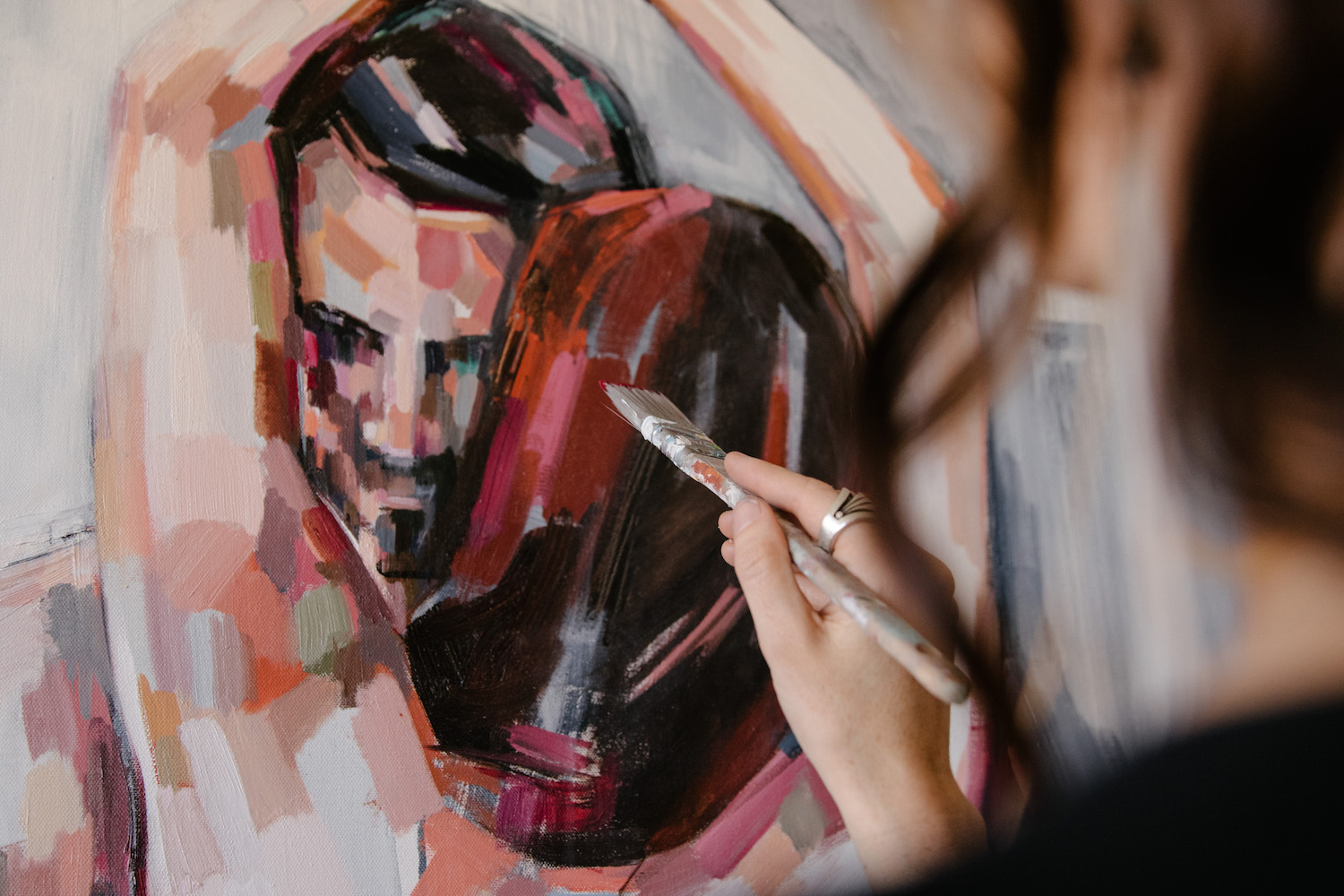
Credit: Julia Duke
RH: Any interesting rituals you do for inspiration before/during painting?
SD: A typical painting day for me is as follows: make a steaming hot cup of matcha tea (I’m seriously addicted to that magical green elixir); listen to my latest podcast obsession as I paint for a couple hours (most recent binge was Heavyweight); take a running break along the river or attend a yoga class (I used to teach yoga fulltime and it remains a huge part of my life); come home, think about that blog post or newsletter I need to write (and inevitably never write it); paint for a few more hours while listening to my latest album obsession (lately it’s been Jeffrey Martin’s, One Go Around).
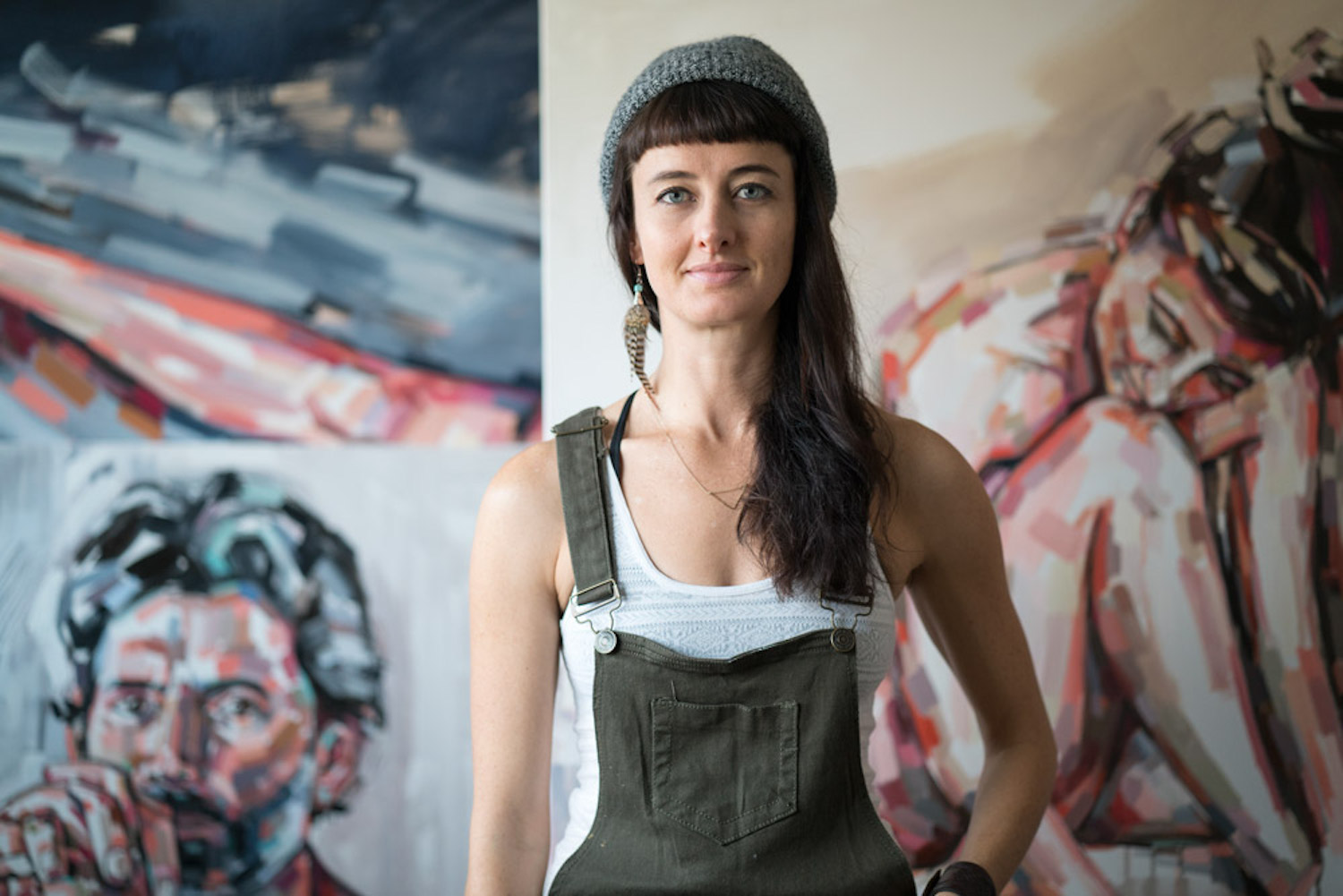
Credit: Jason Bagby
RH: What obstacles, challenges do you face as an artist and how do you overcome them?
SD: Well there are the usual suspects: to not buy into the pervasive cultural belief that all artists are “starving”; to not fall into the comparison trap (the quickest way to squelch creative momentum in my opinion). But as I was just reading this question to my friend to get his input, he felt one of my challenges is that I’m a “heartache sponge.” I laughed out loud because this was hilarious to me as it could be taken a few ways. What he meant is what I’ve long known about myself – I am ridiculously sensitive to the pain of others and this earth. Empathetic to an overwhelming – even unhealthy – extent. So, I have to consciously find ways to stay engaged without oversaturating. To, as Wendell Berry stated so perfectly, ‘be joyful though you have considered all the facts.’ And ultimately, I believe painting has been a perfect tool to channel that sensitivity.

Dunn’s latest piece, “The Falling.” Credit: Sheila Dunn
RH: What are you working on now? What does the future hold?
SD: I have been working on a few figure paintings and experimenting with leaving parts “unfinished,” and walking away at a stage that feels uncomfortable. If nothing else, I hope to always work at the edge of my comfort zone as an artist. And who the hell knows what the future holds at this point? But as long as it includes matcha, wilderness, friends who make me laugh, damn good music and paint on canvas, I’ll be grateful.
When Sheila isn’t in the painting studio, she can be found teaching yoga, searching for her lost keys, and exploring the wonders of the Northwest. To purchase Sheila Dunn’s original paintings and fine art prints, visit her online Etsy store or follow her on Instagram @sheiladunnart.

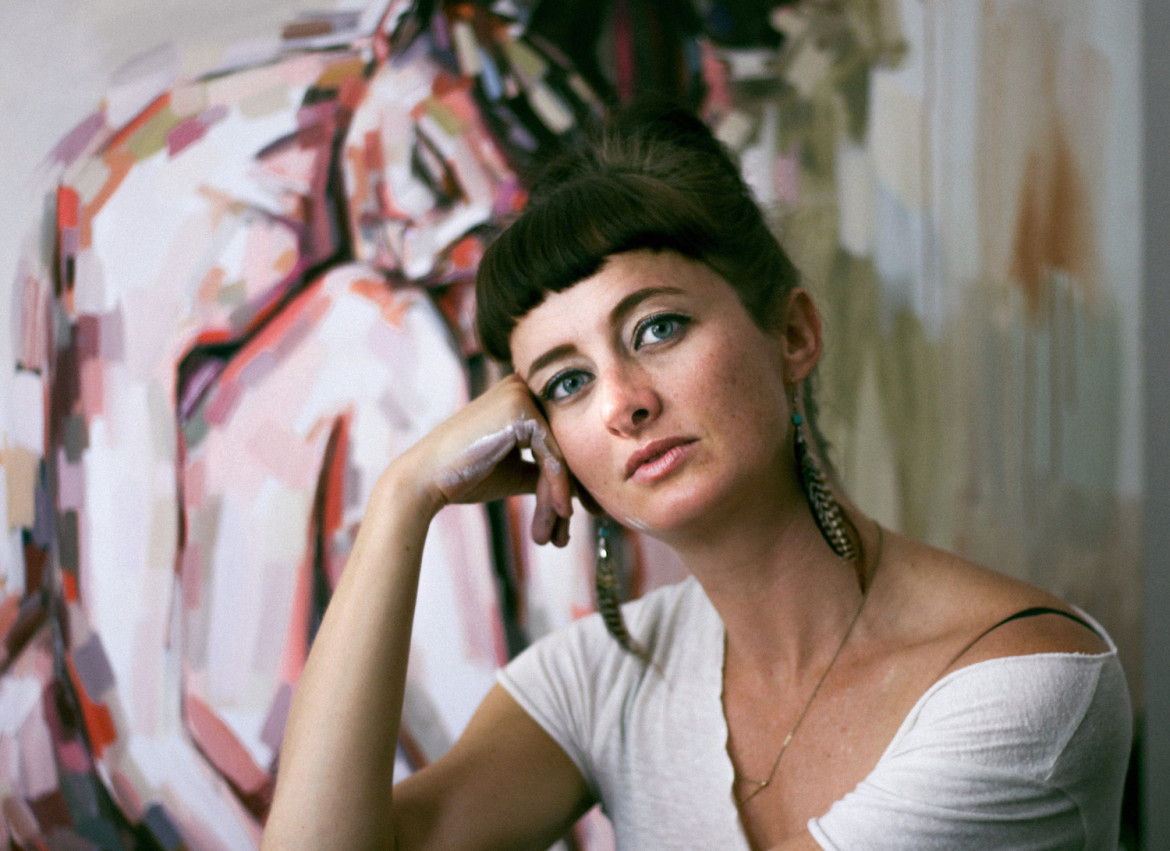





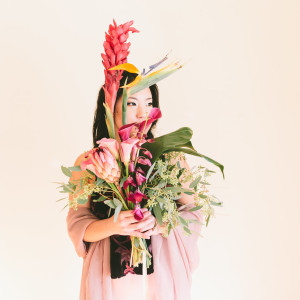


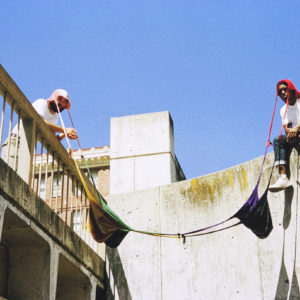
Leave a reply